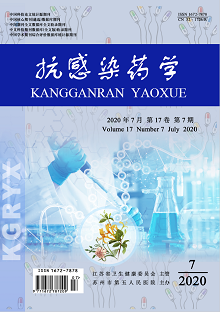CAO Wen-jing, ZHANG Peng, LIU Xiang
Objective: To analyze the rational use of antibiotics in treatment of patients with COVID-19, and evaluate the efficacy. Methods: Clinical data of 32 discharged COVID-19 patients admitted to Xiangtan central hospital (hereinafter referred to as "hospital") from December 2019 to March 3,2020 were extracted. The proportion, types and duration of antimicrobial use were counted, and the clinical efficacy of antimicrobial use was evaluated by comparing the relationship between antimicrobial use and the length of hospital stay, bacterial detection and infection. Results: (1)The use rate of antibacterial drugs was high (75.00%) but the combination use rate was low (6.23%), most were orally administered moxifloxacin on the day of admission. As the severity of the disease increases, the antibacterial drug use rate, types and duration increased; (2)The PCT level of all patients was within the normal range, and the C-reactive protein (CRP) level of all severe patients and common patients were outside the normal range, while the CRP level of mild patients was within the normal range; (3)The positive rate of bacterial culture was low, mainly fungi and hospital resistant bacteria; (4)The length of hospital stay of patients not treated with antibacterial drugs was shorter than that of patients treated with antibacterial drugs (P<0.05). Conclusion: Through the detection of CRP level and the results of bacterial culture, the infection degree of the patients was evaluated, and the blind use of antibiotics was avoided, which might prolong the hospital stay of the patients.
